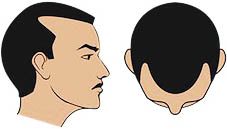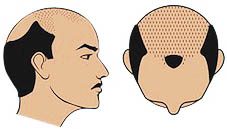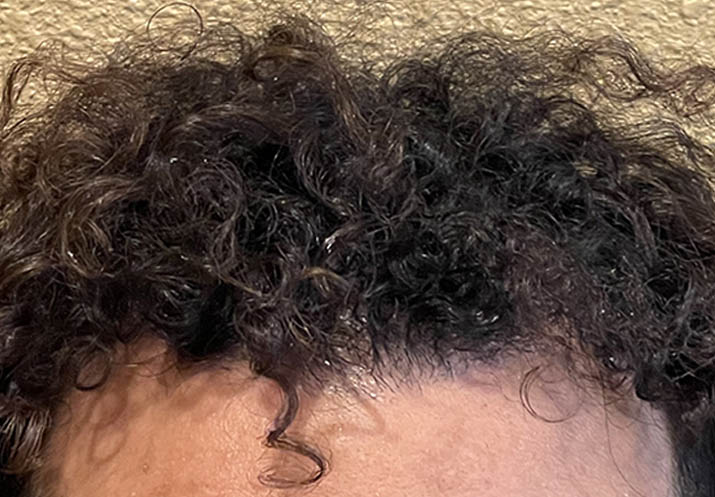Causes of Hair Loss
Causes of Hair Loss
Hair loss, also known as alopecia, is a condition in which an individual experiences a reduced volume of hair, thinning of the hair, or complete baldness. It can occur in people of all ages but is more commonly seen in older individuals.
There are many causes of hair loss, including genetics, hormonal imbalances, medications, medical conditions, nutritional imbalances, and poor hair care practices.
Male pattern baldness, also known as androgenetic alopecia, is the most common cause of hair loss in men. It is caused by the hormone dihydrotestosterone (DHT) and typically starts with a receding hairline at the temples and thinning at the crown of the head.
Female pattern baldness is also common and usually occurs in women after menopause. Hair loss in women can be caused by a variety of factors, including hormonal imbalances, thyroid dysfunction, or a genetic predisposition.
Hair loss can have a significant impact on an individual’s self-esteem and confidence. There are treatments available for hair loss. It is essential to consult with a doctor to determine the cause of hair loss and recommend the best treatment plan. Call or email us today to schedule a free consultation.
Class 2 Hair Loss

A progression of the hairline receding from the temples up from the brow crease. The temporal recession deepens and a frontal tuft is established.
Class 3 Hair Loss

Hair-loss on the crown with a deepening temporal recession with possible hair-loss on the crown with further hair-loss or thinning.
Class 4 Hair Loss

Further frontal hair loss and an enlargement of the crown with a solid bridge of hair separating the two balding areas.
Class 5 Hair Loss

A significant amount of hair-loss with a small tuft remaining in the forelock, the bridge is beginning to split in half and separate and your bald crown is getting bigger with further receding at the temples.
Class 6 Hair Loss

The bridge of hair separating the crown from the frontal tuft disappears leaving a large bald area. The temples have often receded but the sides above the ears and around the crown remain high.
Class 2 Hair Loss

A progression of the hairline receding from the temples up from the brow crease. The temporal recession deepens and a frontal tuft is established.
Class 3 Hair Loss

Hair-loss on the crown with a deepening temporal recession – or you may have a stage 2 in the temples and some hair-loss on the crown with further hair-loss or thinning.
Class 4 Hair Loss

Further frontal hair loss and an enlargement of the crown with a solid bridge of hair separating the two balding areas.
Class 5 Hair Loss

A significant amount of hair-loss with a small tuft remaining in the forelock, the bridge is beginning to split in half and separate and your bald crown is getting bigger with further receding at the temples.
Class 6 Hair Loss

The bridge of hair separating the crown from the frontal tuft disappears leaving a large bald area. The temples have often receded but the sides above the ears and around the crown remain high.
Types of Hair Loss
Alopecia Areata: An autoimmune disorder where the immune system mistakenly attacks hair follicles, leading to patchy hair loss.
Androgenetic Alopecia: The most common type of hair loss, also known as male or female pattern baldness, and is caused by genetics and hormonal factors.
Telogen Effluvium: Temporary hair loss due to stress, illness, medication, or hormonal changes that cause hair follicles to enter the resting phase and eventually fall out.
Traction Alopecia: Hair loss caused by repeatedly pulling hair tightly, such as wearing tight hairstyles or hair extensions
Anagen Effluvium: Hair loss caused by chemotherapy or radiation therapy.
Scarring Alopecia: Hair loss caused by inflammation that damages hair follicles and leaves scar tissue.
Trichotillomania: Hair loss caused by compulsive hair pulling due to a psychological condition.
Nutritional Deficiencies: Hair loss caused by a lack of essential vitamins and minerals, such as iron, zinc, and biotin.
Hair Loss Restoration Before & After


World Renown Surgeons
Find a Location
We are committed to being on the leading edge of advances in hair restoration technology at the lowest cost to ensure that our patients can financially afford to achieve their desired goal of full, natural-looking hair and the confidence achieved along with that.
World Renown Surgeons
Find a Location
We are committed to being on the leading edge of advances in hair restoration technology at the lowest cost to ensure that our patients can financially afford to achieve their desired goal of full, natural-looking hair and the confidence achieved along with that.
